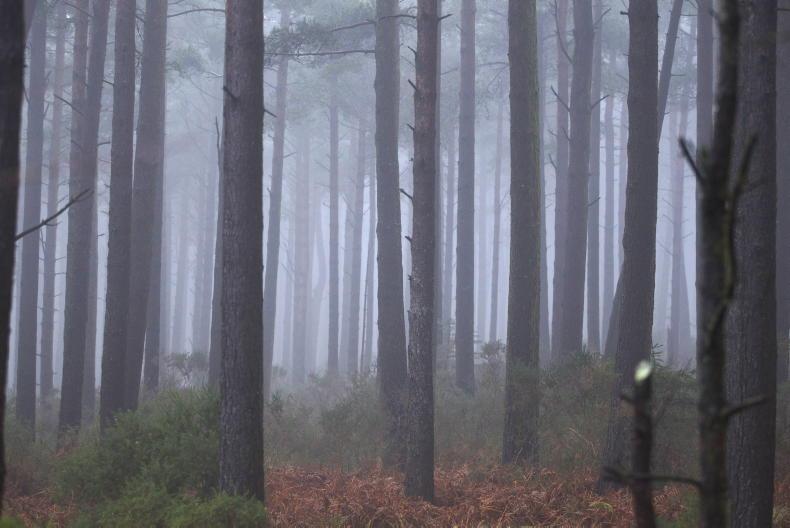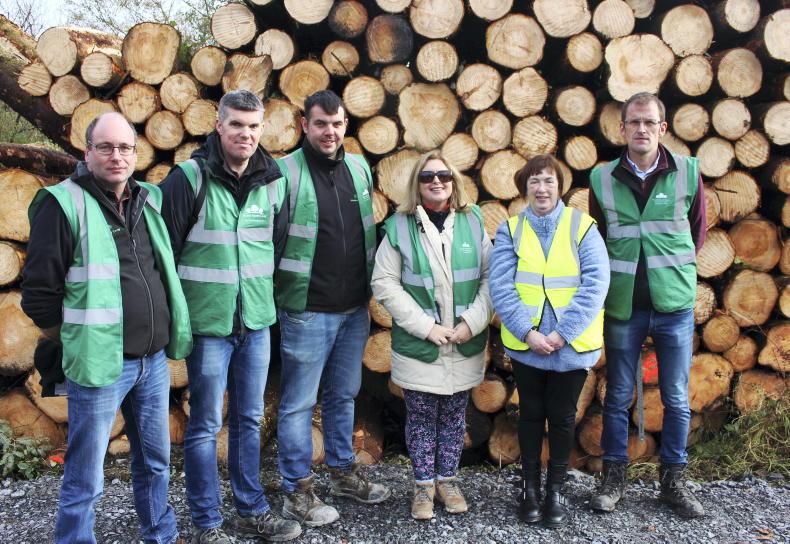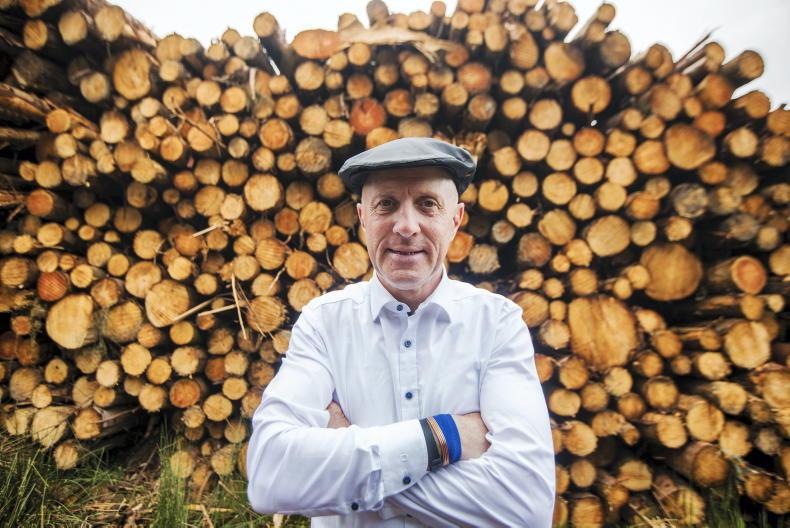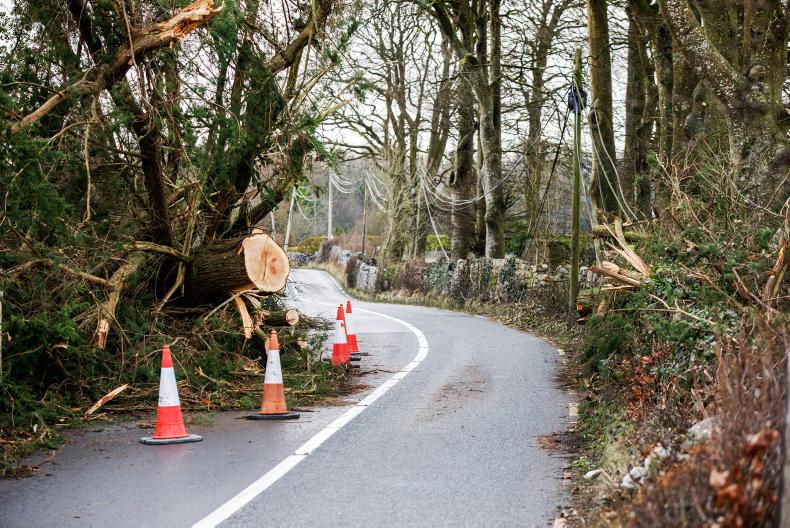The news broke early on Saturday, that a big story relating to farming was winding across the airwaves. I missed “It Says In The Papers”, but was told it was mentioned, and concerned an Environmental Protection Agency (EPA) report calling for a 30% cut in the national herd. I didn’t know which paper the story was in, but then I heard Bobby Kerr open his programme and discuss the story with his panel. It was the Daily Mail, so off I went to buy it.
The story filled the front page. An “explosive” report from the EPA is calling for a 30% cut in the national herd.
That would be a cut of 750,000 cows, and an overall cut of over 2m cattle. It is a much deeper cut than anything implied on the 2030 targets and the Climate Action Plan. Brian Mahon, the Daily Mail’s political correspondent, who obtained the report in question through a freedom of information request, said the report called for a 30% cut not just in cattle numbers, but also sheep and goat herd numbers.
Sheep farmers will be bemused at this, I would think. It’s the first time I’ve read of a direct call for a severe cull of the sheep flock.
But there is more. The report is also calling for a quadrupling of forestry targets. Instead of the current 8,000ha annual target, we would be looking at a target of 32,000ha of forestry every year. That would eat up a huge amount of farmland.
To put it in context, the tillage sector has a target of a 50,000ha increase in area by 2030. If forestry were to hit this target, it would increase by 224,000ha by 2030. For context, the total cereal area in 2022 was 288,000ha. So there’d be an extra hectare of forestry for every hectare of cereals in the country by 2032.
And there’s more. The report says that 90% of Ireland’s drained peatlands would have to be rewetted. Over 300,000ha, a multiple of anything envisaged up to now. That would change any rewetting measures from voluntary to compulsory, because no voluntary scheme would attract anything like 90% of drained peatland into it. And that’s a red line for farm organisations.
Not farming’s target
It’s some package. But who exactly is saying all this should happen and by when? The second question is easier to answer than the first. The targets are for 2050. They are regarded by the authors of the report as necessary to reach carbon neutrality by the middle of the century, which is what Ireland has signed up to as part of the Paris Agreement.
But these measures are not prescribed for agriculture to reach its sectoral target. The EPA report sees these actions as necessary to reach carbon neutrality for a different sector in the CLimate Action Plan - land use, land use change and forestry (LULUCF).
LULUCF folks, the elephant in the Climate Action Plan room. We still haven’t been offered any indication as to what the 2030 target for LULUCF will be, or what the plan is to achieve it.
There seems to be a lot of double accounting going on, as the measures outlined here are remarkably similar to the ones that farming is being asked to work towards, initially as part of the detailed sectoral plan to reduce emissions by 25% by 2030, and onwards towards carbon neutrality for agriculture by 2050. Will the same measures be allowed to be counted against agriculture and LULUCF? I have my doubts.
Does this report matter?
The other crucial question to ask is exactly what status does this report hold? Is it a central plank of the Climate Change Advisory Council’s thought process? Has its message been absorbed into Eamon Ryan and his Department of Environment, Climate and Communications? Or is it a piece of speculative forward projection looking at what would be needed for 2050 if everything stood still, with no breakthroughs in reducing the emissions impact of food production?
Not magic bullets, they don’t exist and won’t be found. But many incremental improvements, accelerated by focused research into sustainable food production. Farming has been accused of developing a chemical addiction in recent decades, and we need publicly funded development of varieties of grasses, legumes, cereals and proteins to reduce our dependency on fertiliser and pesticides.
Sources closer to Agriculture House played down the significance of the report. I’ve heard that it is a modelling document rather than a policy document, and that it is almost two years old. But its emergence right now is interesting, coming as we close in on a 2030 target for LULUCF.
My understanding is that cabinet are being presented with an update on LULUCF this week. Does that mean draft legislation or just a briefing? We’ll have to wait and see. But until we have seen the shape of LULUCF proposals for 2030, we only have a partial picture of the challenge facing Ireland’s 130,000 family farmers. And this is an indicator of just how difficult the longer journey to 2050 will be.
In December, I attended the press conference where the Climate Action Plan had its first annual review. In fact, there were a succession of events, as the Micheál Martin, Eamon Ryan and Leo Varadkar press conference was followed by two briefings from senior members of the various departments tasked with achieving the various sectoral targets.
What was obvious was that among the other sectors, there are taskforces and action plans and targeted rollouts and proposed schemes, but a real deficit of action. As in things happening right now within the sectors that actively reduce emissions. There are no easy answers in transport or industry or buildings or energy in the same way that there are no easy answers for agriculture. And the question of a reduction target hasn’t yet been tackled for LULUCF. It seems to me that farming is actually further down the road to implementing solutions on the ground than the other sectors.
Not enough land to go around
The report does focus the mind on the huge land challenge farming faces. The harsh reality is that if we consider the many new demands being proposed on a static land base, the maths quickly becomes problematic. Let’s just take a quick inventory.
A planned 875,000 extra hectares of forestry by 2050.An increase of 50,000 hectares in tillage crops by 2030.Up to 200 anaerobic digestors by 2030, each using at least 10,000t of grass or equivalent. That’s a land requirement of at least 50,000ha. If that target is hit, would the ambition be to devote more land to producing feedstock for AD plants, diverting more hectares from food production. And to that we must add the 300,000 ha of land targeted for rewetting, again a 2050 target under the blueprint revealed today. And that’s before we consider the thousands of hectares needed for solar panels and any further onshore wind turbines.By my reckoning that’s a cumulative 1,275,000ha of land needed for all these new uses. Land that currently is in livestock production, because they aren’t making any more of it. We would be taking over one quarter of the 4.4m ha of farmland out of livestock production. Even if the report wasn’t looking for a reduction in the national herd to reduce methane emissions, it would have to happen due to loss of grassland for them to live on.
And then there’s the plan to have 450,000ha of land converted into organic production by 2030. It’s safe to say that food output will drop considerably from that land base. You simply can’t maintain output with no fertiliser and no plant protection products; although again we can improve output with targeted breeding. Gene editing would help; it’s surely past time ecologists joined forces with farmers to demand the barriers to availing of this essential sustainability tool be removed.
Farmer reaction
I asked the IFA’s Paul O’Brien for a reaction. He said the story had been circulating from early on Saturday morning among the many WhatsApp groups of farmers he is associated with.
“The focus should be to help farmers reduce emissions and not livestock,” he said. “The Government should be providing assistance to the industry in order to help with a technology-led transition in order to achieve a food-based production system that reduces emissions but also sustains viable farm families and rural communities”.
“While I understand that these figures are for 2050, the objective should be to help meet the 25% reduction for 2030. The IFA will work with any Government departments or bodies to help achieve the multiple benefits of food production in a decarbonised agricultural sector, but not on the back of economic oblivion for our farmers. The farming community will not stand idly by and let this industry die without a fight. The IFA will be looking to meet the EPA as a matter of urgency on this issue.”
The news broke early on Saturday, that a big story relating to farming was winding across the airwaves. I missed “It Says In The Papers”, but was told it was mentioned, and concerned an Environmental Protection Agency (EPA) report calling for a 30% cut in the national herd. I didn’t know which paper the story was in, but then I heard Bobby Kerr open his programme and discuss the story with his panel. It was the Daily Mail, so off I went to buy it.
The story filled the front page. An “explosive” report from the EPA is calling for a 30% cut in the national herd.
That would be a cut of 750,000 cows, and an overall cut of over 2m cattle. It is a much deeper cut than anything implied on the 2030 targets and the Climate Action Plan. Brian Mahon, the Daily Mail’s political correspondent, who obtained the report in question through a freedom of information request, said the report called for a 30% cut not just in cattle numbers, but also sheep and goat herd numbers.
Sheep farmers will be bemused at this, I would think. It’s the first time I’ve read of a direct call for a severe cull of the sheep flock.
But there is more. The report is also calling for a quadrupling of forestry targets. Instead of the current 8,000ha annual target, we would be looking at a target of 32,000ha of forestry every year. That would eat up a huge amount of farmland.
To put it in context, the tillage sector has a target of a 50,000ha increase in area by 2030. If forestry were to hit this target, it would increase by 224,000ha by 2030. For context, the total cereal area in 2022 was 288,000ha. So there’d be an extra hectare of forestry for every hectare of cereals in the country by 2032.
And there’s more. The report says that 90% of Ireland’s drained peatlands would have to be rewetted. Over 300,000ha, a multiple of anything envisaged up to now. That would change any rewetting measures from voluntary to compulsory, because no voluntary scheme would attract anything like 90% of drained peatland into it. And that’s a red line for farm organisations.
Not farming’s target
It’s some package. But who exactly is saying all this should happen and by when? The second question is easier to answer than the first. The targets are for 2050. They are regarded by the authors of the report as necessary to reach carbon neutrality by the middle of the century, which is what Ireland has signed up to as part of the Paris Agreement.
But these measures are not prescribed for agriculture to reach its sectoral target. The EPA report sees these actions as necessary to reach carbon neutrality for a different sector in the CLimate Action Plan - land use, land use change and forestry (LULUCF).
LULUCF folks, the elephant in the Climate Action Plan room. We still haven’t been offered any indication as to what the 2030 target for LULUCF will be, or what the plan is to achieve it.
There seems to be a lot of double accounting going on, as the measures outlined here are remarkably similar to the ones that farming is being asked to work towards, initially as part of the detailed sectoral plan to reduce emissions by 25% by 2030, and onwards towards carbon neutrality for agriculture by 2050. Will the same measures be allowed to be counted against agriculture and LULUCF? I have my doubts.
Does this report matter?
The other crucial question to ask is exactly what status does this report hold? Is it a central plank of the Climate Change Advisory Council’s thought process? Has its message been absorbed into Eamon Ryan and his Department of Environment, Climate and Communications? Or is it a piece of speculative forward projection looking at what would be needed for 2050 if everything stood still, with no breakthroughs in reducing the emissions impact of food production?
Not magic bullets, they don’t exist and won’t be found. But many incremental improvements, accelerated by focused research into sustainable food production. Farming has been accused of developing a chemical addiction in recent decades, and we need publicly funded development of varieties of grasses, legumes, cereals and proteins to reduce our dependency on fertiliser and pesticides.
Sources closer to Agriculture House played down the significance of the report. I’ve heard that it is a modelling document rather than a policy document, and that it is almost two years old. But its emergence right now is interesting, coming as we close in on a 2030 target for LULUCF.
My understanding is that cabinet are being presented with an update on LULUCF this week. Does that mean draft legislation or just a briefing? We’ll have to wait and see. But until we have seen the shape of LULUCF proposals for 2030, we only have a partial picture of the challenge facing Ireland’s 130,000 family farmers. And this is an indicator of just how difficult the longer journey to 2050 will be.
In December, I attended the press conference where the Climate Action Plan had its first annual review. In fact, there were a succession of events, as the Micheál Martin, Eamon Ryan and Leo Varadkar press conference was followed by two briefings from senior members of the various departments tasked with achieving the various sectoral targets.
What was obvious was that among the other sectors, there are taskforces and action plans and targeted rollouts and proposed schemes, but a real deficit of action. As in things happening right now within the sectors that actively reduce emissions. There are no easy answers in transport or industry or buildings or energy in the same way that there are no easy answers for agriculture. And the question of a reduction target hasn’t yet been tackled for LULUCF. It seems to me that farming is actually further down the road to implementing solutions on the ground than the other sectors.
Not enough land to go around
The report does focus the mind on the huge land challenge farming faces. The harsh reality is that if we consider the many new demands being proposed on a static land base, the maths quickly becomes problematic. Let’s just take a quick inventory.
A planned 875,000 extra hectares of forestry by 2050.An increase of 50,000 hectares in tillage crops by 2030.Up to 200 anaerobic digestors by 2030, each using at least 10,000t of grass or equivalent. That’s a land requirement of at least 50,000ha. If that target is hit, would the ambition be to devote more land to producing feedstock for AD plants, diverting more hectares from food production. And to that we must add the 300,000 ha of land targeted for rewetting, again a 2050 target under the blueprint revealed today. And that’s before we consider the thousands of hectares needed for solar panels and any further onshore wind turbines.By my reckoning that’s a cumulative 1,275,000ha of land needed for all these new uses. Land that currently is in livestock production, because they aren’t making any more of it. We would be taking over one quarter of the 4.4m ha of farmland out of livestock production. Even if the report wasn’t looking for a reduction in the national herd to reduce methane emissions, it would have to happen due to loss of grassland for them to live on.
And then there’s the plan to have 450,000ha of land converted into organic production by 2030. It’s safe to say that food output will drop considerably from that land base. You simply can’t maintain output with no fertiliser and no plant protection products; although again we can improve output with targeted breeding. Gene editing would help; it’s surely past time ecologists joined forces with farmers to demand the barriers to availing of this essential sustainability tool be removed.
Farmer reaction
I asked the IFA’s Paul O’Brien for a reaction. He said the story had been circulating from early on Saturday morning among the many WhatsApp groups of farmers he is associated with.
“The focus should be to help farmers reduce emissions and not livestock,” he said. “The Government should be providing assistance to the industry in order to help with a technology-led transition in order to achieve a food-based production system that reduces emissions but also sustains viable farm families and rural communities”.
“While I understand that these figures are for 2050, the objective should be to help meet the 25% reduction for 2030. The IFA will work with any Government departments or bodies to help achieve the multiple benefits of food production in a decarbonised agricultural sector, but not on the back of economic oblivion for our farmers. The farming community will not stand idly by and let this industry die without a fight. The IFA will be looking to meet the EPA as a matter of urgency on this issue.”









SHARING OPTIONS